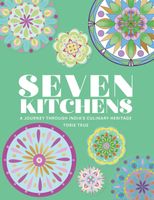Advertisement
Mughal
Appears in
By Torie True
Published 2025
The Mughal empire was vast, stretching across the Indian subcontinent from present-day Pakistan to Bangladesh, as far south as Hyderabad in India and as far north as Afghanistan. The empire encompassed many ethnic groups, languages and religions including Afghan, Turkish, Kashmiri, Persian and Punjabi. These created a heady cocktail of culinary techniques and flavours within Mughal cuisine.
Established in 1526, the Mughal empire originated with the Timurid prince Babur, who defeated Ibrahim Lodi at the Battle of Panipat. Babur hailed from Andijan, the oldest city in modern-day Uzbekistan, and was descended on his father’s side from Timur, also known as Tamerlane, who built an empire in the fourteenth century around what is now Afghanistan, Iran and central Asia. His maternal ancestry included Genghis Khan, the all-powerful Mongol warrior, and in honour of his mother’s lineage, Babur used the Persian name for Mongol – Mughal – to name his own fledgling empire. Over the course of the next 300 years, 17 Mughal emperors ruled until the British East India Company took control in the mid-nineteenth century, exiling the last of them, Bahadur Shah Zafar II, to Rangoon in Burma, modern-day Myanmar.

